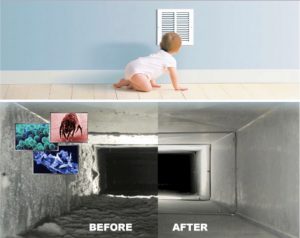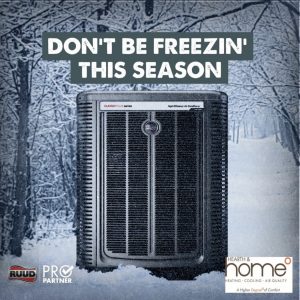Being aware of the warning signs of mold in ductwork, evaporator coils, and drip pans will ensure your family is not breathing unhealthy air. Here are three easy ways to look out for mold in your home:
- Keep your eyes peeled
Whether it’s in your ductwork, evaporator coils, or drip pans, looking for mold are the easiest way to find it. Make a habit of walking through your home and looking for signs of mold. If your home is usually humid, add this task to your weekly cleaning routine. If it’s drier, make it a part of your monthly furnace filter inspection.
Look at all registers, visible ductwork, evaporator coils, and AC/furnace drip pans. Do you see mold? If no, that’s great. But you may still be at risk
Remember, mold grows in moisture. Is there pooling water that may encourage mold growth? Are any drains blocked? Do you see condensation on the outside of your vents? What about on the inside of your registers? –
Coils dehumidify the air and drip the resulting condensation into drip pans. If those coils are working too hard or drip pans are blocked, the resulting moisture becomes a perfect habitat for mold growth. Keep your eyes peeled for mold spores — and the condensation and excess moisture that help it grow — in order to keep your home clean and family healthy.
- Use your nose.
What about the ductwork you can’t see? What if you can’t see inside registers or down the drain in drip pans? Use your nose! When mold grows in your ductwork, it gives off a strong mildew smell that spreads throughout the house
If you suddenly start smelling mildew, try turning your system off, waiting 10 to 20 minutes, and then turn it back on. If the smell goes away — or gets weaker — when your system is off and comes back when you turn it back on, you may have mold in your ductwork
If you don’t see mold or smell it, you most likely don’t have a mold problem. Want to be 100 percent sure? Call an HVAC professional at Hearth & Home.



